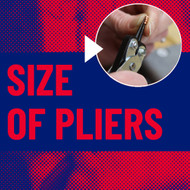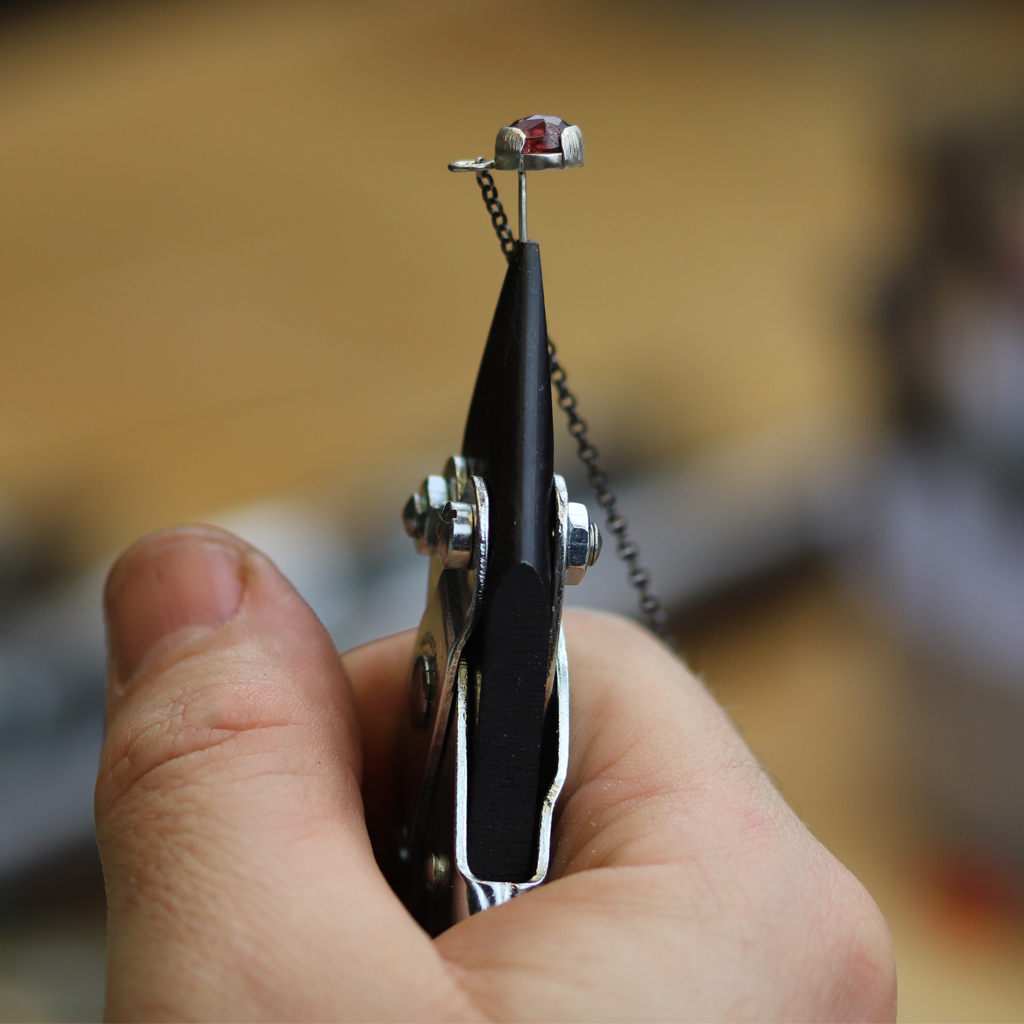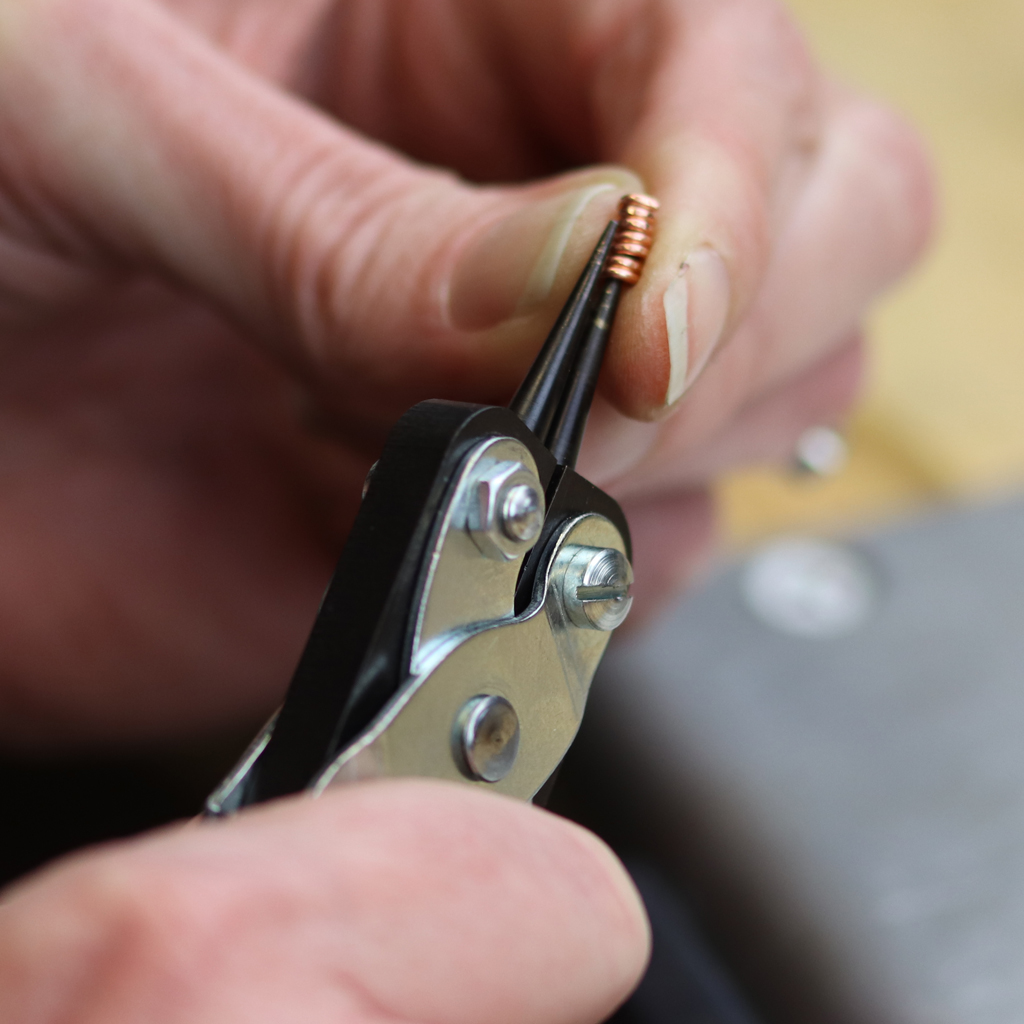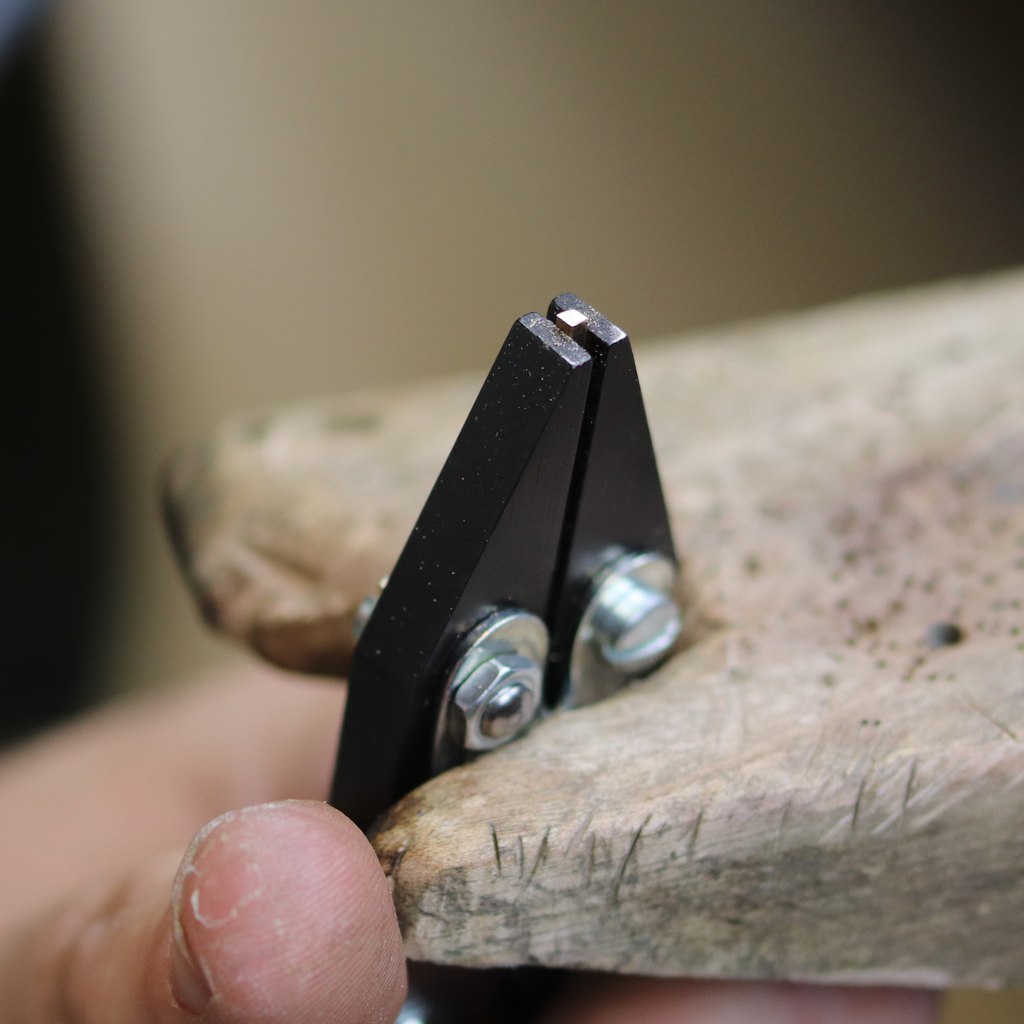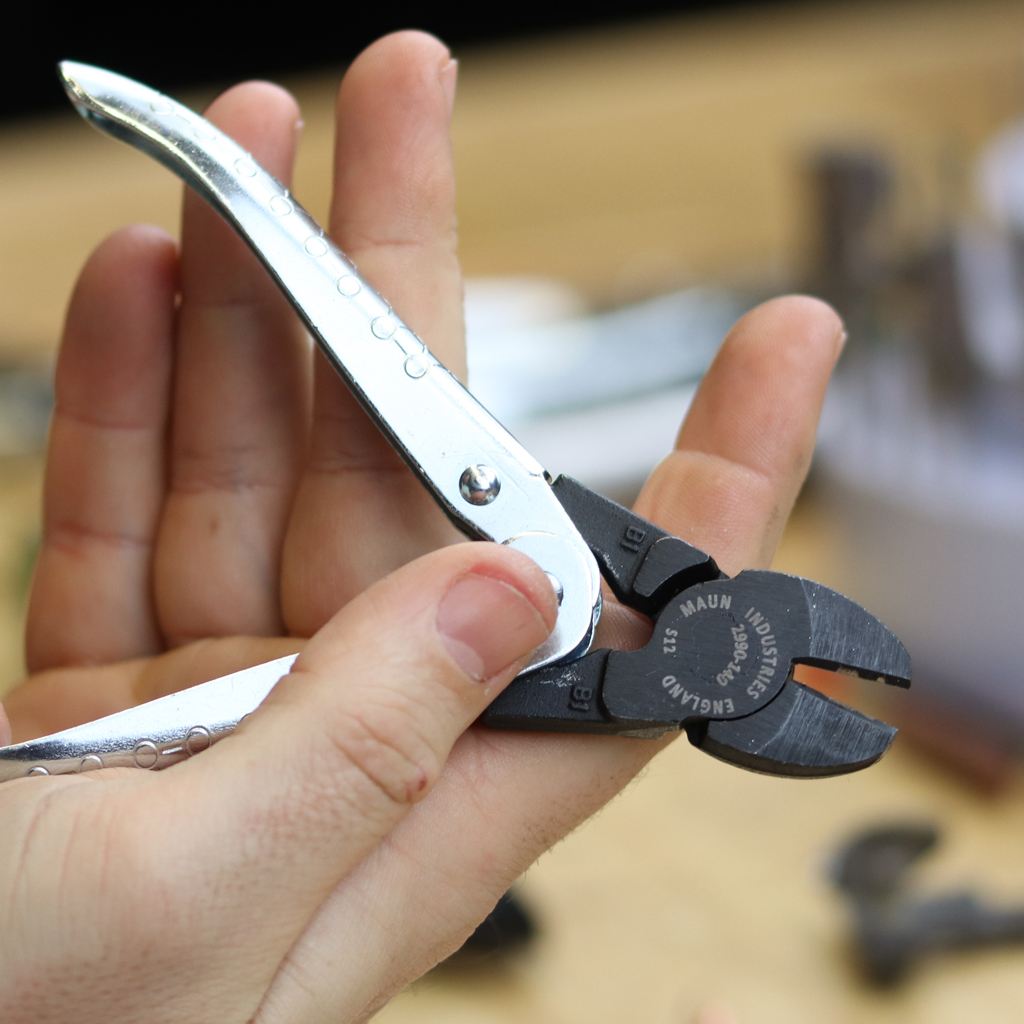Size Of Pliers
25th Oct 2025
Have you ever wondered what the optimal size of pliers for your hand is?
Choosing an unsuitable size can make your job more difficult or uncomfortable.
In this post, we’ll discuss how pliers are measured, how to measure your hand for your pliers, and which size pliers to choose for various situations.
How are plier sizes measured?
Before we discuss plier sizes, we need to establish a consensus on how pliers are measured.
Depending on the manufacturer you’re looking at, pliers may be measured in the following ways:
- Overall Length: Measured as the total length from the tip of the jaws to the end of the handles when the pliers are closed, this is the most common measurement used. It is usually measured in inches or millimetres.
- Jaw Length: Measured from the tip of the jaw to the pivot point, this measurement shows the maximum depth the pliers can grip.
- Jaw Width: Measured across the widest point of the jaws when they are closed, this measurement shows the type and size of objects that can be gripped securely.
- Jaw Opening: Measured from the tip of the upper jaw to the tip of the lower jaw when open to their maximum extent, this measurement determines the size of the object the pliers can handle.
- Handle Length: Measured from the pivot point to the handles, this measurement indicates the amount of leverage the user will be able to attain. Larger handle lengths are generally found on heavier-duty pliers.
- Grip Span: Measured from the tip of the upper handle to the tip of the lower handle when the pliers are open to their fullest extent, this measurement affects the ergonomics of the pliers, and how comfortable they are to use.
- Cutting Capacity (for cutting pliers): This is a measurement of the maximum diameter of the wire of a known strength that the plier can cut effectively for the lifetime in use.
Interested in a new pair of pliers? Maun has a unique range that you’ll be glad you found - Shop them here.
How to choose the best plier size for your hands
Selecting the right pliers for your unique hand size will maximise your efficiency and comfort, as well as keep you safe and ensure precision in your work.
Properly sized pliers reduce fatigue, increase grip strength and stability, and improve the accuracy of your work.
Here’s how to measure:
Measure Your Hand Size
Begin by measuring your hand. That is done by determining two measurements:
- Palm Height: This is the distance from the tip of your middle finger to the base of your palm. This is the baseline grip span that suits you best.
- Palm Width: This is the widest part of your palm. This measurement will allow you to determine the length of handle you’ll need.
Matching Those to Plier Sizes
Palm Height - Grip Span
The comfort of the tool is profoundly impacted by the distance between the handles when the jaws are fully open.
A grip span that is too wide can result in a strained hand.
A Grip span that is too narrow will not give you the leverage you would have with a properly sized one (although this can be offset by pliers that use a compound action).
The grip span should feel comfortable. This measurement is usually 20-40mm shorter than your total palm height.
For example, a palm height of 110mm should be matched with pliers that open to a span of 70-90mm. This gives a good, open palm position, without over-stretching.
Palm Width – Handle Length
The handle length should not extend too far beyond your palm width, otherwise it may cause discomfort or clumsy handling.
As an example, if your palm width is 90mm, you should use pliers with a handle length of 100-130mm.
The total plier length would, therefore, be approximately 160-200mm, including the jaws.
Fit and Function – Finding a balance
Remember that a plier handles do not have to open to their maximum capacity, only enough to allow the jaws to accommodate the material they are being used with.
You may also be comfortable with longer handles if you require the additional mechanical advantage and do not require the maximum jaw capacity.
Choosing the best size of pliers for the job
For the best efficiency and satisfaction, choose the size of pliers that best suits your hand size.
Different trades, too, have different needs when it comes to pliers, so choosing the correct type is key to performance and safety.
Jewellery Work
Fine Detail Work
In order to work properly with delicate chains and gem settings, choose pliers with small, fine jaws. Their strength will be sufficient, and they will work the delicate metals without damaging them.
For setting stones or working with delicate chains, precision is paramount. Choose pliers with smaller, finer jaws to handle tiny components without damage. We have a specialised mini pliers range for this here.
The Maun Snipe Nose Smooth Jaws Parallel Plier (125mm) is excellent for setting small stones. It has an 85mm grip span, precise control of pressure and position of the jaws, and minimal hand strain.
Wire Wrapping and Looping
In order to create loops and wrap wire, choose a plier with smooth, round jaws to avoid marring the metal. For angles and bends, choose flat nose pliers.
For turning wire, choose a Fine Nose Round Jaws Parallel Plier 125 mm.
The small grip span makes them perfect for finer detailed work, and the conical shape make them perfect for gripping and turning delicate metal wire without damaging it.
Bending and Shaping Metal
Bending metal sheets and forming right angles requires a smooth jaws plier with handles long enough to provide leverage without being so long as to lose manoeuvrability.
Bending a sheet bracelet form is easily done with the Maun Smooth Jaws Flat Nose Parallel Plier (125 mm).
Cutting Tasks
Proper cutting pliers for the diameter and strength of what you’re cutting are essential. Otherwise, they may do a poor job, require more effort than can be applied, and the cutting edges may wear prematurely (or even break entirely).
Here are some examples:
Maun Diagonal Cutting Plier for Hard Wire Comfort Grips (140 mm):
- Best For: Repetitive or frequent cuts.
- Size Significance: Because they are a slightly shorter length, at 140 mm, this tool is more comfortable for extended use. You can do quick, repetitive cuts without much hand fatigue, so it is perfect for jewellery, horology and modelling applications.
Maun End Cutting Plier for Hard Wire (150 mm):
- Best For: Cutting wire semi-flush to surfaces.
- Size Significance: You will have enough leverage for cutting close to the workpiece because of the generous 150 mm length, and you won’t damage the surface. When trimming wire ends or nails and screws to a semi-flush finish, this plier is ideal.
Model Making
Detail Bending and Gripping
For gripping delicate parts, bending wire, and other finicky jobs, the Maun Snipe Nose Smooth Jaws Parallel Plier 125 mm is the ideal tool.
It will give you great balance between precision, power, and control, and the 85mm grip span means you’ll have a secure yet comfortable hold.
Imagine crafting the detailed rigging of a model ship. You can get to those hard-to-reach spaces using the 120mm length, and you’ll still have the precision and finesse to apply maximum control.
Because of the smaller size, you also won’t feel the hand fatigue that larger pliers may cause during prolonged use.
Alternatively, long nose pliers are ideal for reaching into tight spaces or bending fine wire components thanks to their slender jaws.
Straightening and Holding Components
When your task requires a firm grip and straightening metals without damaging them, the Maun Smooth Jaws Flat Nose Parallel Plier Return Spring 160 mm is a great choice. With a length of 160mm, you’ll get extra leverage for straightening metal parts, but the 120mm grip span will help to reduce hand fatigue during repetitive tasks.
The smooth jaws ensure no excess damage occurs to components, despite the strong grip.
Imagine placing metal parts for a model car chassis. The 160mm length allows you to reach the places you need and to hold components securely, without slipping. Even with larger components, you will maintain both precision and the necessary leverage, without any surface damage caused by serrated jaws.
Trimming Wire and Small Parts
The Maun Diagonal Cutting Plier For Hard Wire 160 mm and the 140 mm Comfort Grips are ideal for most cutting tasks. Available in 160mm for standard work and 140mm for increased comfort during repetitive or prolonged work, this model is a must for trimming wire and small parts.
Scenario: Imagine trimming excess wire from a model railroad component. You’ll have all the power you need from the 160mm version, or you can cut many times without fatigue using the 140mm version.
Automotive
Wiring Harness Assembly
Precision and control are a must for working on a wiring harness assembly, and that’s where the right size of pliers comes in. This can make the difference between success and failure.
The Snipe Nose Serrated Jaws Parallel Plier 125 mm is perfect for crimping small connectors or threading wires through tight spaces. The 85mm grip span and compact size make it a tool for precision work, even when dealing with more delicate components.
Example: Get the finesse and control you need while assembling a complex wiring harness for an ECU. Crimping even tiny connectors with relative ease and no damage to the insulation, the parallel action keeps pressure evenly distributed for secure connections.
Cutting Through Hard Wire
Get through even the toughest wires with the tool. Brake cables and thick wires are no match for the Diagonal Cutting Plier For Hard Wire 160 mm.
This tool provides the power and durability necessary for these tough jobs. With excellent leverage to maximize your input power, it will help you get the job done.
Example: Clean cut through the hardened steel wire of brake cables with quick ease.
Side Cutting for Multi-Purpose Use
Some situations call for cutting at odd angles, and side cutters are there to make it happen.
The Side Cutter Parallel Plier For Hard Wire Comfort Grips 200 mm is great for many different cutting tasks. With a 160mm grip span and comfort grips, it will keep your hands comfortable and reduce fatigue during repetitive cutting.
Example: Imagine cutting through speaker cables, cable ties, small brackets, and similar materials with neat precision. Even large and complex systems could be installed with minimal fatigue.
Final Summary
Now you know how to measure the size of your hand and match that against the size of pliers you’re looking to buy.
If you have any feedback or improvements you’d recommend for this post, we’d love to hear from you.
This post was brought to you by Maun, experts in tools since 1944.
Scroll back up to re-read any key points, browse our related pages below, or contact us with any questions:

